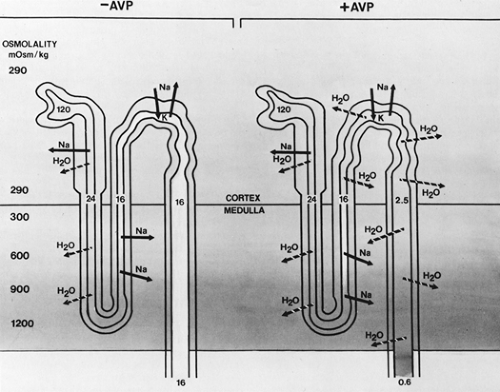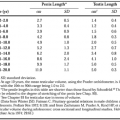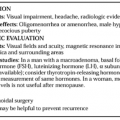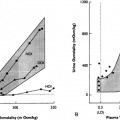BIOLOGIC ACTIONS
VASOPRESSIN
RENAL ACTION
The most important action of vasopressin is to conserve body water by reducing the rate of urinary, solute-free water excretion.39 This antidiuretic effect is achieved by promoting the reabsorption of solute-free water from urine as it passes through the distal or collecting tubules of the kidney (Fig. 25-10) (see Chap. 206). In the absence of vasopressin, the membranes lining this portion of the nephron are impermeable to water as well as to solutes. Hence, hypotonic filtrate formed in the more proximal part of the neph-ron passes unmodified through the distal tubule and collecting duct. In this condition, which is known as water diuresis, urine osmolality and flow in a healthy adult usually approximate 40 to 60 mOsm/kg and 15 to 20 mL per minute, respectively. In the presence of vasopressin, the hydroosmotic permeability of the distal and collecting tubules increases, which allows water to back-diffuse down the osmotic gradient that normally exists between tubular fluid and the isotonic or hypertonic milieu of the renal cortex and medulla. Because water is reabsorbed without solute, the urine that remains has an increased osmotic pressure as well as a decreased volume or flow rate. The degree of urinary concentration is proportional to the plasma vasopressin concentration, and in healthy adults, it is usually maximal at hormone concentrations of 5 pg/mL or less (see Fig. 25-5).
 FIGURE 25-10. Schematic representation of the effect of vasopressin (AVP) on the formation of urine by the nephron. The osmotic pressure of tissue and tubular fluid is indicated by the density of the shading. The numbers within the lumen of the nephron indicate typical rates of flow in milliliters per minute. Arrows indicate reabsorption of sodium (Na) or water (H2O) by active (solid) or passive (broken) processes. Note that vasopressin acts only on the distal nephron, where it increases the hydroosmotic permeability of tubular membranes. The fluid that reaches this part of the nephron normally amounts to 10% to 15% of the total filtrate and is hypotonic, owing to selective reabsorption of sodium in the ascending limb of the Henle loop. In the absence of vasopressin, the membranes of the distal nephron remain relatively impermeable to water as well as to solute, and the fluid issuing from the Henle loop is excreted essentially unmodified as urine. With maximum vasopressin action, all but 5% to 10% of the water in this fluid is reabsorbed passively down the osmotic gradient that normally exists with the surrounding tissue. (From Robertson GL. Diseases of the posterior pituitary. In: Felig P, Baxter J, Brodus A, Frohman L, eds. Endocrinology and metabolism. New York: McGraw-Hill, 1986:351.)
Stay updated, free articles. Join our Telegram channel
Full access? Get Clinical Tree
 Get Clinical Tree app for offline access
Get Clinical Tree app for offline access

|




